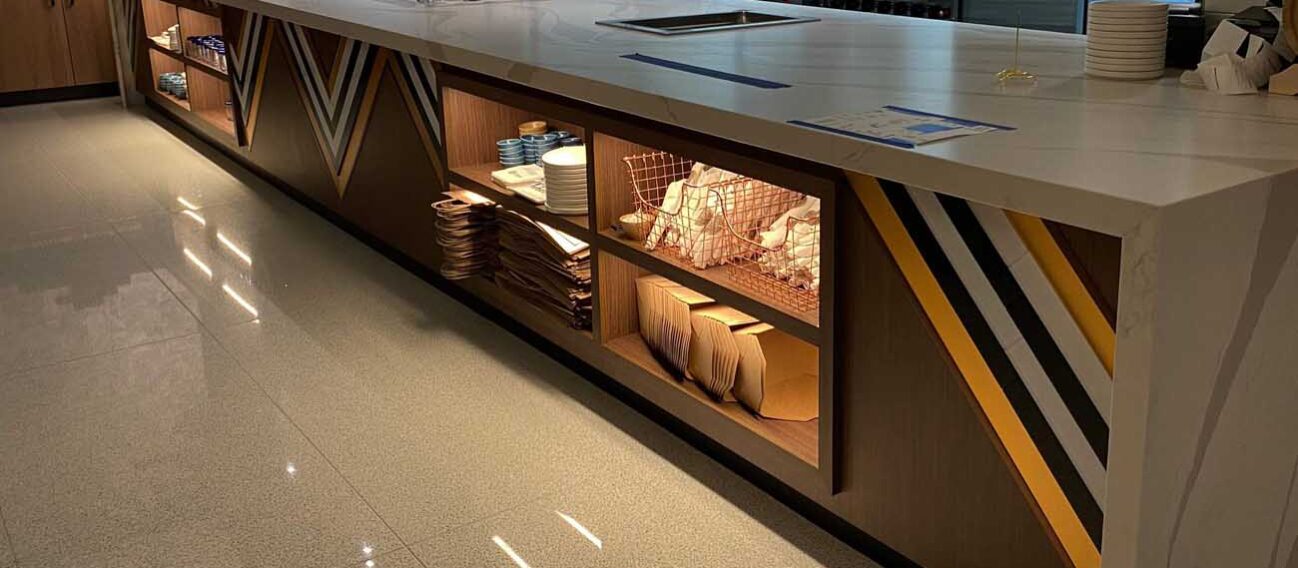The Elegance and Functionality of Millwork Lighting
Make a statement with millwork lighting.
Millwork lighting is the integration of light fixtures that are crafted into designed spaces in cabinetry, shelving, displays, and other architectural features. Millwork illumination combines aesthetics with functionality by providing task or accent lighting and adding a memorable design feature. Backlighting objects on display or highlighting objects from above or below are typical examples of millwork work lighting.
Benefits of millwork lighting:
Here are some of the benefits of millwork lighting:
- Visually appealing: The seamless blend of light and architecture is enhanced because millwork lighting is designed to be embedded or become part of the object it illuminates. Millwork lighting is typically perceived as elegant or sophisticated as it is recognized as an investment in style and quality.
- Illumination from concept point: The nature of millwork lighting demands that the design of the cabinet, display, molding, or window accounts for the application of light as a fundamental feature of the project. The outcome is typically a superior, visually stunning expression of light highlighting an object on display or an architectural feature within a space compared to light fixtures applied post-design.
- Application diversity: While commonly associated with woodwork, millwork lighting can be integrated with other materials and used in ceilings, walls, windows, pillars, displays, shelf units, etc., and can be used in hospitality, retail, or residential
Types of millwork lighting
Millwork-capable light fixtures can be integrated into numerous application types, including:
- Recessed lighting: The fixture is installed so that the illuminated surface of the fixture is flush with the surface of the millworked object.
- Undercabinet lighting: The fixture is installed under cabinets to illuminate countertops or items displayed under the cabinets. This application is also commonly used for task lighting design needs.
- Shelf lighting: Installed on standard shelves or inside shelves designed to look like individual cubes, this application is typically applied where products or objects on display require illumination.
- Architectural features: Millwork lighting can be designed into virtually any element of a room or display where concealment or subtle blending is desired. Linear light fixtures, specifically small profile fixtures, are commonly used in these applications.
- Exterior applications: While millwork lighting is generally associated with interior lighting designs, many millwork-capable fixtures can also be used outdoors.
Linear fixtures and millwork lighting
Technically, several fixture types could be used in a millwork design. However, linear LED fixtures are the predominant fixture style utilized. The ability of linear fixtures to be narrow, shallow, color-changing, and installed in seamless, rigid, or flexible rows makes them the perfect choice for most millwork lighting designs. Linear fixtures provide clean, uniform illumination and help reduce hotspots, shadows, and glare that may be present with other fixture styles.
Linear lighting can also deliver the low watts per linear foot and smart control options required in many modern lighting designs.







